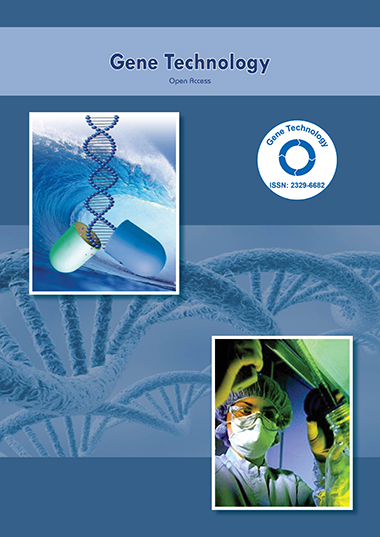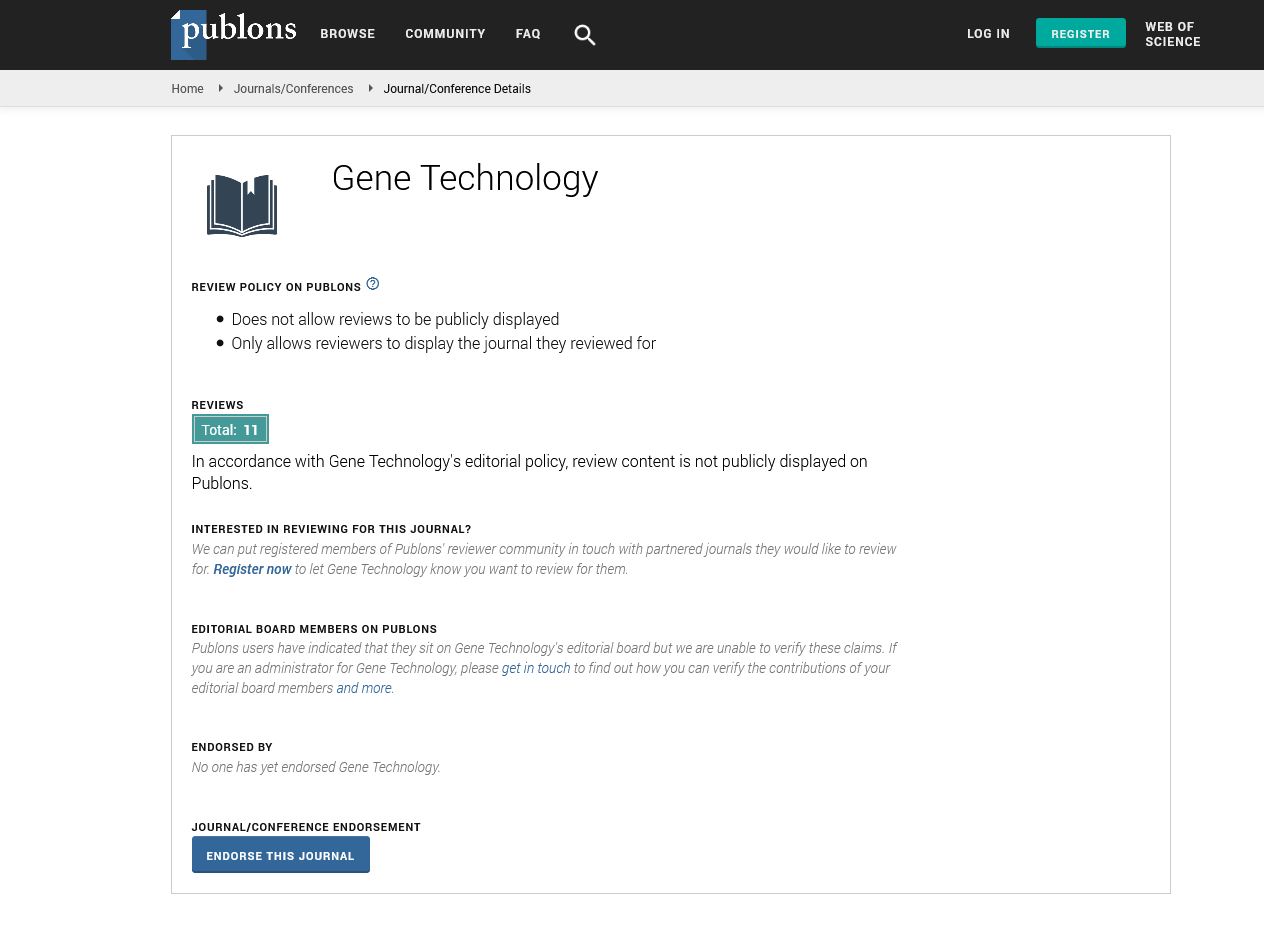Indexed In
- Academic Keys
- ResearchBible
- CiteFactor
- Access to Global Online Research in Agriculture (AGORA)
- RefSeek
- Hamdard University
- EBSCO A-Z
- OCLC- WorldCat
- Publons
- Euro Pub
- Google Scholar
Useful Links
Share This Page
Journal Flyer

Open Access Journals
- Agri and Aquaculture
- Biochemistry
- Bioinformatics & Systems Biology
- Business & Management
- Chemistry
- Clinical Sciences
- Engineering
- Food & Nutrition
- General Science
- Genetics & Molecular Biology
- Immunology & Microbiology
- Medical Sciences
- Neuroscience & Psychology
- Nursing & Health Care
- Pharmaceutical Sciences
Short Commentary - (2021) Volume 10, Issue 3
Commentary on: Lower Bone Mineral Density and Higher Bone Resorption Marker Levels in Premenopausal Women with Type 1 Diabetes in Japan
Fumi Yoshioka1,2,3*2Department of Internal Medicine, Kawachi General Hospital, Higashi-Osaka, Japan
3Medical Corporation Makotokai Yoshioka Medical Clinic, Kadoma, Japan
Received: 13-Apr-2021 Published: 04-May-2021, DOI: 10.35248/2329-6682.21.10.168
About the Study
Type 1 diabetes (T1D) is associated with poor bone quality and the risk of fractures [1]. Therefore, it is important to study osteoporosis prevention in women with T1D. This crosssectional study investigated heel Bone Mineral Density (BMD) using Quantitative Ultrasonography (QUS) and bone metabolic marker levels in pre-and postmenopausal women with T1D compared to those in controls [2]. QUS is performed mainly at the heel, providing an estimate of BMD, thus reflecting bone mass. QUS confirms an increase in BMD detected using dualenergy X-ray absorptiometry (DXA) in patients with type 2 diabetes (T2D). Moreover, QUS may also be used to evaluate bone quality [3], decreases in which are associated with increased fracture risks in elderly women with diabetes. In a recent study, the lumbar spine, total hip, and femoral neck BMDs were similar, and only the forearm and heel BMDs may have been lower in those with T1D than those in controls [4]. However, heel DXA is rarely performed in Japan. QUS was also used to assess heel BMD in the Japanese Population-based Osteoporosis study [5]. Most QUS devices measure broadband ultrasound attenuation (BUA) and speed of sound (SOS). The AOS-100NW measures the SOS and transmission index (TI), an attenuationrelated parameter, and provides a derived parameter, the osteosono- assessment index (OSI): OSIï¼TI × SOS2 [6]. The TI is an indicator of BUA and bone density; thus, the OSI is more correlated with BMD than BUA and the OSI and reflects the Young's modulus (longitudinal elasticity constant) [7]. Unlike conventional bone metabolism markers that indicate bone metabolites, tartrate-resistant acid phosphatase-5b (TRACP-5b) [8] and whole parathyroid hormone (wPTH) [9] are sensitive markers that show bone metabolic activity and are not affected by renal function; thus, pre- and postmenopausal pathological conditions may be compared. We examined heel BMD and bone metabolic markers in pre- and postmenopausal women with T1D with equivalent diabetes durations. In Japanese individuals, the use of osteoporosis drugs is delayed. Since vitamin D is rarely taken as a supplement, patients taking osteoporosis drugs and supplements were also excluded as having effects on bone metabolism. There were no cases of 25(OH) D sufficiency [2]. In the premenopausal period, the average vitamin D intake was 5.5 μg/day, meeting the national nutrition intake standard, but in 2020, the standard vitamin D intake for adults was revised to 10 μg/day. The average Body Mass Index (BMI) in Japanese women the BMI was comparable; however, the energy intake in postmenopausal women with T1D exceeded the energy output of standing work activities (35 Kcal/body weight, Kcal/day). Only postmenopausal women with T1D had significantly higher nutrient intakes than those in postmenopausal controls [2]. In this study, dialysis cases with large effects on bone metabolism and cases of secondary osteoporosis (per the Fracture Risk Assessment Tool) [10] were excluded. Therefore, in premenopausal women with T1D, the estimated glomerular filtration rate was significantly higher than that in controls, likely because of early-stage renal hyperfiltration [11], as calcium may be washed away in urine. Premenopausal women with T2D have lower bone turnover compared to non-diabetic controls [12]. In our study, the wPTH levels in pre- and postmenopausal women with T1D were significantly lower than those in individually controls due to high blood glucose levels. In premenopausal women with T1D, wPTH levels were decreased, but levels of TRACP-5b, a bone resorption marker, were increased; therefore, bone-specific alkaline phosphatase and osteocalcin (bone formation markers) levels were not increased relative to those in controls. Bone formation marker levels were comparable to control levels, but only in premenopausal women with T1D, a significant increase in TRACP-5b levels resulted in an imbalance in bone metabolism. Oxidative stress levels might explain the higher TRACP-5b levels in premenopausal women with T1D [13]. The characteristics of T1D include hyperglycemia, blood glucose glycemic variability, insulin deficiency, and decreased physical activity. The lower BMD in patients with T1D in the premenopausal period remains unexplained. Heel BMD contributes less to prognosis than lumbar spine and femoral neck BMDs. QUS may yield a large error unless the heel is wiped with alcohol-soaked cotton to remove dirt and moistened and the heel’s angle is adjusted accurately during measurement. Considering that heel BMD is different from lumbar spine and femoral neck BMDs, T1Dassociated osteoporosis is largely associated with bone quality, and heel BMD correlates with the step [14] and pulse wave velocity [15]; therefore heel BMD should be measured frequently if possible.
REFERENCES
- Farlay D, Armas LA, Gineyts E, Akhter MP, Recker RR, Boivin G. Nonenzymatic glycation and degree of mineralization are higher in bone from fractured patients with type 1 diabetes mellitus. J Bone Miner Res. 2016;31(1):190-195.
- Yoshioka F, Nirengi S, Murata T, Kawaguchi Y, Watanabe T, Saeki K, et al. Lower bone mineral density and higher bone resorption marker levels in premenopausal women with type 1 diabetes in Japan. J Diabetes Investig. 2021
- Momma H, Niu K, Kobayashi Y, Guan L, Sato M, Guo H, et al. Skin advanced glycation end-product accumulation is negatively associated with calcaneal osteo-sono assessment index among non-diabetic adult Japanese men. Osteoporos Int. 2012;23(6):1673-1681.
- Danielson KK, Elliott ME, LeCaire T, Binkley N, Palta M. Poor glycemic control is associated with low BMD detected in premenopausal women with type 1 diabetes. Osteoporos Int. 2009;20(6):923-933.
- Ikeda Y, Iki M , Morita A, Aihara H, Kagamimori S, Kagawa Y, et al. Age-specific values and cutoff levels for the diagnosis of osteoporosis in quantitative ultrasound measurements at the calcaneus with SAHARA in healthy Japanese women: Japanese population-based osteoporosis (JPOS) study. Calcif Tissue Int. 2002;71(1):1-9.
- Tsuda-Futami E, Hans D, Njeh CF, Fuerst T, Fan B, Li J, et al . An evaluation of a new gel-coupled ultrasound device for the quantitative assessment of bone. Br J Radiol. 1999;72(859):691-700.
- Fujiwara S, Sone T, Yamazaki K, Yoshimura N, Nakatsuka K, Masunari N, et al. Heel bone ultrasound predicts non-spine fracture in Japanese men and women. Osteoporos Int. 2005;16(12):2107-2112
- Nishizawa Y, Inaba M, Ishii M, Yamashita H, Miki T, Goto H, et al. Reference intervals of serum tartrate-resistant acid phosphatase type 5b activity measured with a novel assay in Japanese subjects. J Bone Miner Metab. 2008;26(3):265-270.
- Gao P, Scheibel S, D'Amour P, John MR, Rao SD, Schmidt-Gayk H, et al. Development of a novel immunoradiometric assay exclusively for biologically active whole parathyroid hormone 1–84: implications for improvement of accurate assessment of parathyroid function. J Bone Miner Res. 2001;16(4):605-614.
- Fujiwara S, Nakamura T, Orimo H, Hosoi T, Gorai I, Odén A, et al. Development and application of a Japanese model of the WHO fracture risk assessment tool (FRAX™). Osteoporos Int. 2008;19(4):429-435.
- Tonneijck L, Muskiet MH, Smits MM, Van Bommel EJ, Heerspink HJ, Van Raalte DH, et al. Glomerular hyperfiltration in diabetes: mechanisms, clinical significance, and treatment. J Am Soc Nephrol. 2017;28(4):1023-1039.
- Purnamasari D, Puspitasari MD, Setiyohadi B, Nugroho P, Isbagio H. Low bone turnover in premenopausal women with type 2 diabetes mellitus as an early process of diabetes-associated bone alterations: a cross-sectional study. BMC Endocr Disord. 2017;17(1):72.
- Wu Q, Zhong ZM, Pan Y, Zeng JH, Zheng S, Zhu SY, et al. Advanced oxidation protein products as a novel marker of oxidative stress in postmenopausal osteoporosis. Med Sci Monit. 2015;21:2428.
- Kitagawa J, Nakahara Y. Associations of daily walking steps with calcaneal ultrasound parameters and a bone resorption marker in elderly Japanese women. J Physiol Anthropol. 2008;27(6):295-300.
- Hirose KI, Tomiyama H, Okazaki R, Arai T, Koji Y, Zaydun G, et al. Increased pulse wave velocity associated with reduced calcaneal quantitative osteo-sono index: possible relationship between atherosclerosis and osteopenia. J Clin Endocrinol Metab. 2003;88(6):2573-2578.
Citation: Yoshioka F (2021) Commentary on: Lower Bone Mineral Density and Higher Bone Resorption Marker Levels in Premenopausal Women with Type 1 Diabetes in Japan. J Diabetes Investig. 10:168.
Copyright: © 2021 Yoshioka F. This is an open-access article distributed under the terms of the Creative Commons Attribution License, which permits unrestricted use, distribution, and reproduction in any medium, provided the original author and source are credited.

